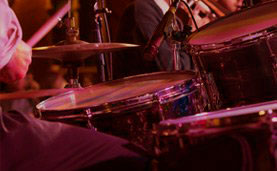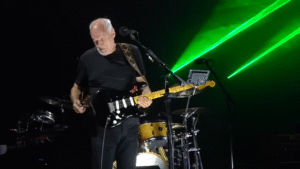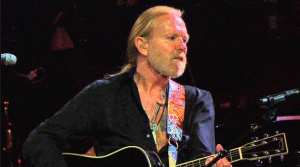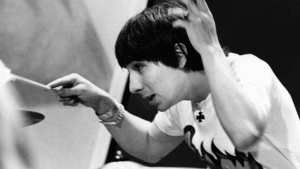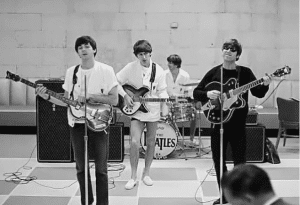How Each Of The Beatles Quit The Band
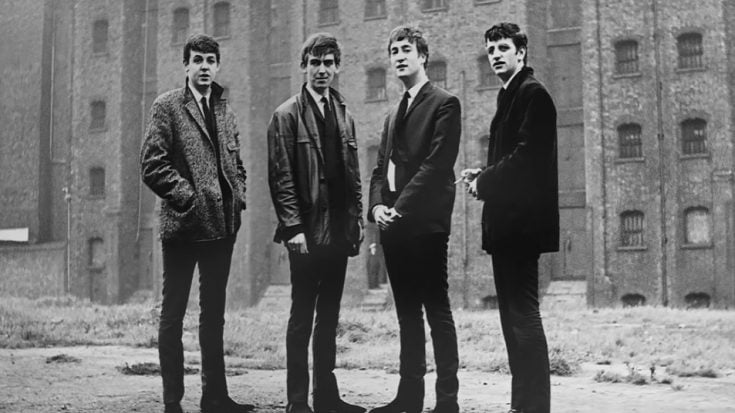
via Vinyl Rewind / YouTube
From an external perspective, the Beatles presented a front of unparalleled unity. However, beneath the surface, each member had, at some point, opted to depart from the iconic band, even if only temporarily.
The solidarity of the Fab Four was initially conveyed through matching outfits and hairstyles during their early days, complemented by their shared height among Paul McCartney, John Lennon, and George Harrison (sorry, Ringo).
This camaraderie was further reinforced by their shared sense of humor. Hence, the sudden breakup in April 1970 took the world by surprise, as there had been no outward signs suggesting anything other than a harmonious relationship paralleling their music.
For each member, the burdens associated with being part of the Beatles, compounded by their additional responsibilities in managing the group’s Apple Corps company by mid-1968, eventually reached a breaking point. At various times, one member would express the desire to leave, only to be persuaded to return later. The instances of such departures are compiled below in chronological order.
https://twitter.com/thenowherefans/status/1626032617547071496
Ringo quit The Beatles on August 22, 1968
On August 22, 1968, Ringo Starr made history as the first Beatle to step away from the band. The departure echoed a scene from A Hard Day’s Night, where Ringo’s exit mirrored a somewhat prophetic moment.
Feeling discontent with his playing and sensing a disconnect as an outsider among the other three, Ringo decided to take a break. In his own words from Anthology, he expressed, “I felt I wasn’t playing great, and I also felt that the other three were really happy and I was an outsider.”
Starr sought solace on a yacht owned by actor Peter Sellers in Sardinia during his hiatus. It was during this period that he penned “Octopus’s Garden”. Meanwhile, McCartney temporarily assumed the drumming duties for tracks like “Back in the U.S.S.R.” and “Dear Prudence”.
In a heartfelt gesture, the drummer’s bandmates sent him a telegram expressing their love and need for him. Touched by the message, Ringo returned two weeks later to find his drum kit adorned with flowers spelling out a warm “Welcome Back, Ringo.”
George quit The Beatles on January 10, 1969
On January 10, 1969, George Harrison also staged his own exit from the Fab Four. A moment captured in the documentary Let It Be sheds light on his frustration with McCartney’s dictatorial behavior.
In the film, George expresses his willingness to conform to Paul’s desires, stating, “I’ll play what you want me to play. Or I won’t play at all if you don’t want me to. Whatever it is that’ll please you, I’ll do it.” Adding to his discontent, Harrison was dissatisfied with the challenges of getting his own compositions recorded.
The fact that these tensions unfolded under the scrutiny of film cameras exacerbated the situation for Harrison. Reflecting on the situation, he remarked, “It never came to blows. But I thought, ‘What’s the point of this? I’m quite capable of being relatively happy on my own, and I’m not able to be happy in this situation. I’m getting out of here.’”
A few days later, during lunch, Harrison walked out, bidding farewell with a casual, “See you ’round the clubs.” Despite the departure, Harrison’s absence was short-lived. He rejoined the group five days later after a five-hour meeting, during which the other three members acquiesced to some of his demands.
John quit The Beatles on September 20, 1969
On September 20, 1969, John Lennon reached a pivotal moment in his contemplation about leaving the Beatles. The catalyst for this decision came after his performance at the Toronto Rock and Roll Revival, which emboldened him to share his intention with the others during a meeting a week later.
Recounted in Anthology, McCartney clung to the vision of the Get Back/Let It Be concept, advocating for the band’s return to their roots by playing live rock ‘n’ roll in small venues to rediscover their shared purpose. However, Lennon, looking McCartney in the eye, bluntly stated, “Well, I think you’re daft. I wasn’t going to tell you till we signed the Capitol deal…but I’m leaving the group!”
Acting on manager Allen Klein’s advice, they kept the news confidential from the public, considering they were on the brink of releasing Abbey Road and still had the challenges presented by the Let It Be project to navigate. Moreover, given Lennon’s impulsive nature, there lingered the possibility of a change of heart.
McCartney elaborated, “For about three or four months, George, Ringo, and I rang each other to ask, ‘Well, is this it, then?’ Nobody quite knew if it was just one of John’s little flings, and that maybe he was going to feel the pinch in a week’s time and say, ‘I was only kidding.'”
Paul quit The Beatles on April 10, 1970
On April 10, 1970, the Beatles’ disbandment was not unveiled through a grand press conference but rather in promotional material coinciding with the announcement of McCartney’s eponymous album, set for release on April 17.
Preferring not to engage with the media directly, Paul, along with Apple press officer Derek Taylor, crafted a Q&A sheet that succinctly conveyed the news to the world in a few sentences. While Paul didn’t explicitly declare the split as permanent, his response to the query, “Do you foresee a time when Lennon-McCartney becomes an active songwriting partnership again?” was a straightforward “No.”
The announcement caught the other members off guard, especially as they were already uneasy about McCartney competing with the imminent release of Let It Be a week later. However, Paul had his rationale, explaining, “I felt the group finished the minute John said, ‘I’m leaving.’ We’d all (except John) had gone at trying to keep the group together and failed. So it wasn’t any longer a case of trying to keep it together; it was now whether we tell the world or not.”
Seven months later, on New Year’s Eve, McCartney initiated a lawsuit against the other three and Apple Corps to formally dissolve the Beatles. The legal proceedings endured for four contentious years, culminating in the official dissolution of the group in January 1975.
https://twitter.com/music_mix_tape/status/1636027461602361344
A legacy like no other
Despite their relatively brief existence as a band, the Beatles’ legacy endures. Their impact on music, culture, and society remains unparalleled, and their music continues to inspire and captivate listeners of all ages.
At the heart of the Beatles’ legacy is their groundbreaking musical evolution. Beginning with infectious pop tunes, they rapidly evolved into trailblazing experimenters in the studio, pushing the boundaries of what was possible in popular music. Albums like Sgt. Pepper’s Lonely Hearts Club Band and The White Album showcased their versatility, incorporating diverse genres, innovative production techniques, and complex musical arrangements.
The Beatles’ songwriting partnership between Lennon and McCartney produced a prolific catalog of timeless hits. Their ability to craft memorable melodies and poignant lyrics resonated with millions worldwide, contributing to the band’s unprecedented commercial success. The Beatles achieved an unmatched level of popularity, sparking widespread Beatlemania and forever changing the landscape of live performances.
Beyond their musical achievements, the Beatles became cultural icons and catalysts for societal change. Embracing the counterculture of the 1960s, they influenced fashion, art, and attitudes, symbolizing a spirit of rebellion and freedom. Their embrace of Eastern philosophy, particularly through George Harrison’s interest in Indian spirituality, introduced new ideas and perspectives to a global audience.


